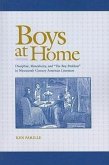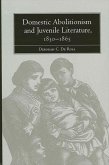In this study, Elizabeth Keyser examines representative works from the various genres in which Alcott wrote, uncovering self-portraits or metafictions that convey what it meant to be a Victorian woman writer. Alcott's wealth of allusion to other writers, such as Charlotte Bronte, Margaret Fuller, and, especially, Nathaniel Hawthorne, and of recurring motifs, such as textiles, texts, and theatricals, reveals her consistent subversion of conventional values for women. Keyser shows that beneath the mildly progressive feminism of her domestic and children's fiction lurks the more radical feminism of the Gothic thrillers. In some works Alcott symbolically conveys her vision of a feminist future in which men and women fulfill their androgynous potential and live in a harmonious state of equality. But in her most sustained critique of gender relations, the Little Women trilogy, Alcott betrays grave misgivings about the possibility of such a future.







